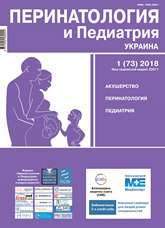Кесарево сечение: отдаленные последствия — «ниши» послеоперационного рубца
DOI:
https://doi.org/10.15574/PP.2018.73.54Ключевые слова:
кесарево сечение, ниша, рубец, матка, шейка матки, маточное кровотечение, кровомазаниеАннотация
В связи с неуклонным ростом частоты оперативных родов, перед практическими врачами и учеными встает вопрос о безопасности кесарева сечения. Кроме того, не до конца изучено его влияние на дальнейшее качество жизни, фертильность и менструальную функцию женщины. В статье проанализированы данные литературы об одном из возможных осложнений, касающихся послеоперационных рубцов, — так называемых «нишах». С целью разработки превентивных стратегий и определения наиболее эффективных методик лечения важно выяснить этиологию развития «ниши» после кесаревого сечения.
Библиографические ссылки
Abalos E, Addo V, Brocklehurst P, El SM, Farrell B, Gray S, Hardy P, Juszczak E, Mathews JE, Masood SN et al. (2013). Caesarean section surgical techniques (CORONIS): a fractional, factorial, unmasked, randomised controlled trial. Lancet.382:234—248. https://doi.org/10.1016/S0140-6736(13)60441-9
Awonuga AO, Fletcher NM, Saed GM, Diamond MP.(2011). Postoperative adhesion development following cesarean and open intra-abdominal gynecological operations: a review. Reprod Sci.18:1166—1185. https://doi.org/10.1177/1933719111414206; PMid:21775773 PMCid:PMC3343100
Barros AJ, Santos IS, Matijasevich A, Domingues MR, Silveira M, Barros FC, Victora CG.(2011). Patterns of deliveries in a Brazilian birth cohort: almost universal cesarean sections for the better-off. Rev Saude Publica.45:635—643. https://doi.org/10.1590/S0034-89102011005000039; PMid:21670862 PMCid:PMC3794425
Betran AP, Merialdi M, Lauer JA, Bing-Shun W, Thomas J, Van LP, Wagner M. 2007.Rates of caesarean section: analysis of global, regional and national estimates. Paediatr Perinat Epidemiol.21:98—113. https://doi.org/10.1111/j.1365-3016.2007.00786.x; PMid:17302638
Bij de Vaate AJ, Brolmann HA, van der Voet LF, van der Slikke JW, Veersema S, Huirne JA. (2011). Ultrasound evaluation of the Cesarean scar: relation between a niche and postmenstrual spotting. Ultrasound Obstet Gynecol. 37:93—99. https://doi.org/10.1002/uog.8864; PMid:21031351
Bij de Vaate AJ, van der Voet LF, Naji O, Witmer M, Veersema S, Brolmann HA, Bourne T, Huirne JA. (2014). Prevalence, potential risk factors for development and symptoms related to the presence of uterine niches following Cesarean section: systematic review. Ultrasound Obstet Gynecol.43:372—382. https://doi.org/10.1002/uog.13199; PMid:23996650
Buhimschi CS, Zhao G, Sora N, Madri JA, Buhimschi IA.(2010).Myometrial wound healing post-Cesarean delivery in the MRL/MpJ mouse model of uterine scarring.Am J Pathol.177:197—207. https://doi.org/10.2353/ajpath.2010.091209; PMid:20489145 PMCid:PMC2893663
Bujold E, Bujold C, Hamilton EF, Harel F, Gauthier RJ. (2002).The impact of a single-layer or double-layer closure on uterine rupture. Am J Obstet Gynecol.186:1326—1330. https://doi.org/10.1067/mob.2002.122416; PMid:12066117
Bujold E, Goyet M, Marcoux S, Brassard N, Cormier B, Hamilton E, Abdous B, Sidi EA, Kinch R, Miner L et al. (2010). The role of uterine closure in the risk of uterine rupture.Obstet Gynecol.116:43—50. https://doi.org/10.1097/AOG.0b013e3181e41be3; https://doi.org/10.1097/AOG.0b013e3181f4c99e; https://doi.org/10.1097/AOG.0b013e3181f4d9b2; PMid:20567166
Caesarean section surgical techniques: a randomised factorial trial (CAESAR).(2010). BJOG.117:1366—1376.
Gurol-Urganci I, Bou-Antoun S, Lim CP, Cromwell DA, Mahmood TA, Templeton A, van der Meulen JH. (2013). Impact of Caesarean section on subsequent fertility: a systematic review and meta-analysis. Hum Reprod. 28:1943—1952. https://doi.org/10.1093/humrep/det130; PMid:23644593
Vervoort AJMW, Uittenbogaard LB, Hehenkamp WJK., Brolmann HAM, Mol BWJ, Huirne JAF (2015). Why do niches develop in Caesarean uterine scars? Hypotheses on the aetiology of niche development Hum Reprod. 30(12):2695—2702. https://doi.org/10.1093/humrep/dev240

